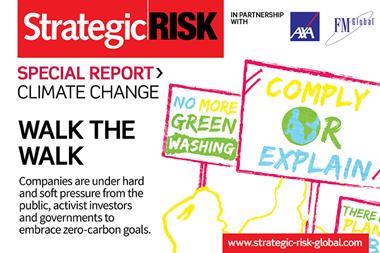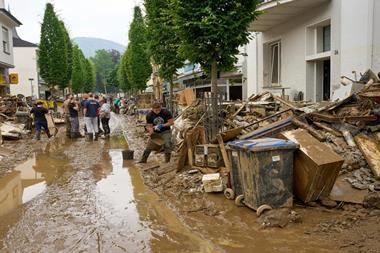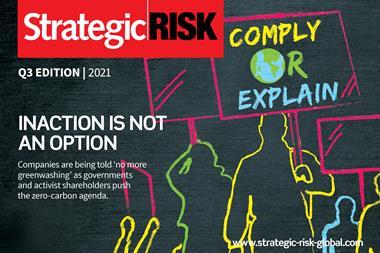The IPCC report tells us tomorrow is not the same as yesterday, hence past data solely can’t always predict future outcomes
My immediate reaction to the latest IPCC report was the same reaction that I have every time I read about climate change – that all of us have a role to play in the solutions that address these changes in the short and long term to achieve a more resilient and sustainable world.
As an engineer, researcher, and scientist, with decades of experience in risk management and resilience, I see an opportunity to direct the attention that the report created around this critical issue to a productive, actionable, outcome.
I work to understand how businesses can become more resilient against all kinds of hazards, including the changing climate. My key message to clients and businesses is not to panic but to take stock.
We need to acknowledge change needs to happen, we can’t be complacent because there are short and long-term changes businesses can and should make to ensure resilience.
Time to be strategic
The IPCC report has been important in putting climate change back on the radar screen. The key is to now put it on the agenda. The big takeaway for business executives is to understand what they can be doing now and to be strategic in the long-term.
The report consists of almost 4,000 pages. Only the Summary for Policymakers is final, but for most companies, that’s all they need. The major conclusions are certain; the planet’s temperature is rising, and its effects are evident.
Data and models show that wet areas of the planet are becoming wetter from extreme rainfall, increasing flood risk, and dry areas are becoming drier, increasing drought and wildfire risk. The certainty around how the changes in climate are affecting other hazards, such as windstorms and hail, is less certain.
Climate resilience can be overwhelming, like an insurmountable challenge with a lot of uncertainty. To approach this in a strategic way, it helps to break the solutions down into three distinct areas: property, operations and people:
- With property, the fundamentals are key. Where are your buildings located? What’s nearby? What impact will increasing temperatures have? How will you cope with river flooding, increased rainfall or rising sea levels?
- When it comes to operations, businesses need to understand what is critical to their success and break this down to an inside out approach. Start with operations around the property such as equipment outside and how this can be impacted by climate change. Then look at the maintenance of access, infrastructure and energy supply. These elements can be forgotten as they sit outside the four walls of a facility – but are critical. Another aspect of operations is the supply chain which is likely to become increasingly vulnerable to the impact of climate change.
- With people, it is clear the most important audience to any business is current employees and future talent. They want to hear that you get it, you are concerned, and you have a strategy in place. Business leaders need to then communicate this strategy to the board and – depending on the structure – to owners or shareholders. Beyond this, you need to be able to communicate the strategy to your market and customers. These audience groups have one thing in common, they want to know that as a business you understand climate change, can see the impact and have the strategies in place to mitigate against it. They also need to see you care.
The worst thing a company can do right now on the heels of this report, is nothing.
Get your priorities straight
The priority for executives is to understand the situation they face and the risks they are likely to encounter. From here, it’s then forming and communicating the strategy. Having this process in place is a minimum requirement and needs to be done now.
It can be hard to balance the need for practical solutions that will address the big issues being faced and at the same time, not have an adverse impact on another part of the business. This is a big challenge for businesses in a changing world where the future won’t be like the past. Having a strategy tailored to address a company’s current and future risks can be a huge advantage for them in the years to come.
The biggest takeaway today – this is driven home by the IPCC – is that we’ve always thought of the world as a very static place. We understood the risks and we understood what we needed to do. Now as we learn more about the science, we now know the risks are changing and we have a better idea of how fast.
Tomorrow is not the same as yesterday – that is very clear. Repeatedly, new science shows that data solely from experience can’t always predict future outcomes. The models and data still need refinement if we are to move beyond estimating temperature changes to more complex risks caused by a changing climate.
Those risks now deserve our full attention and planning. We need to be asking the difficult questions like, what is the climate resilience of my business going to be like in 5, 10, 20, 30 years? When we build a new facility, what are the climate risks that it will face over its lifetime?
The long-term climate risks being faced by businesses are rapidly changing and the risks are more dynamic. When changes occur and the effects of climate change become more frequent, businesses need to respond by being agile and definitive in their actions.
The big challenge now is to act on what is known now, and plan for future needs to be met as well.
Dr Lou Gritzo is vice president and manager of research at FM Global




















No comments yet